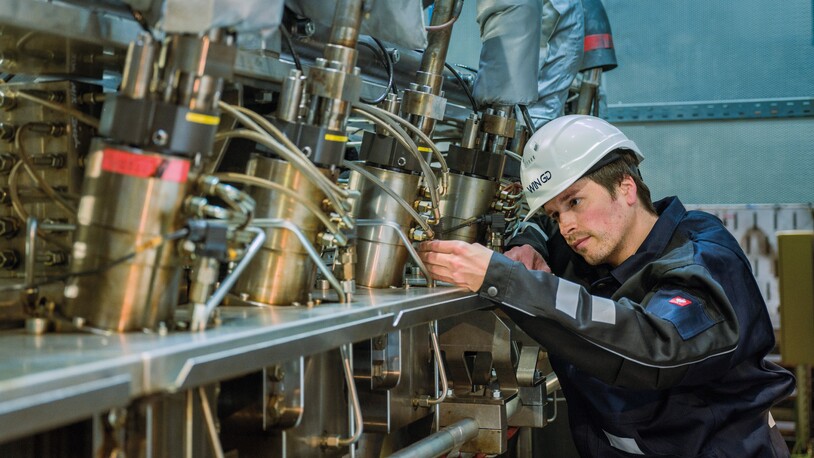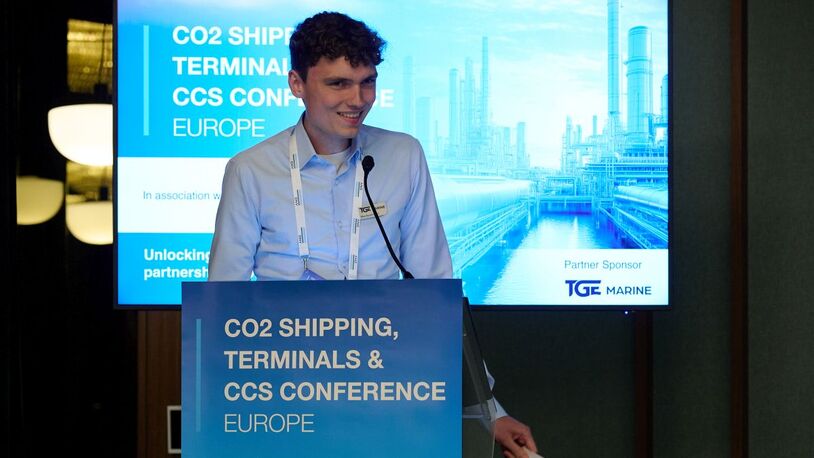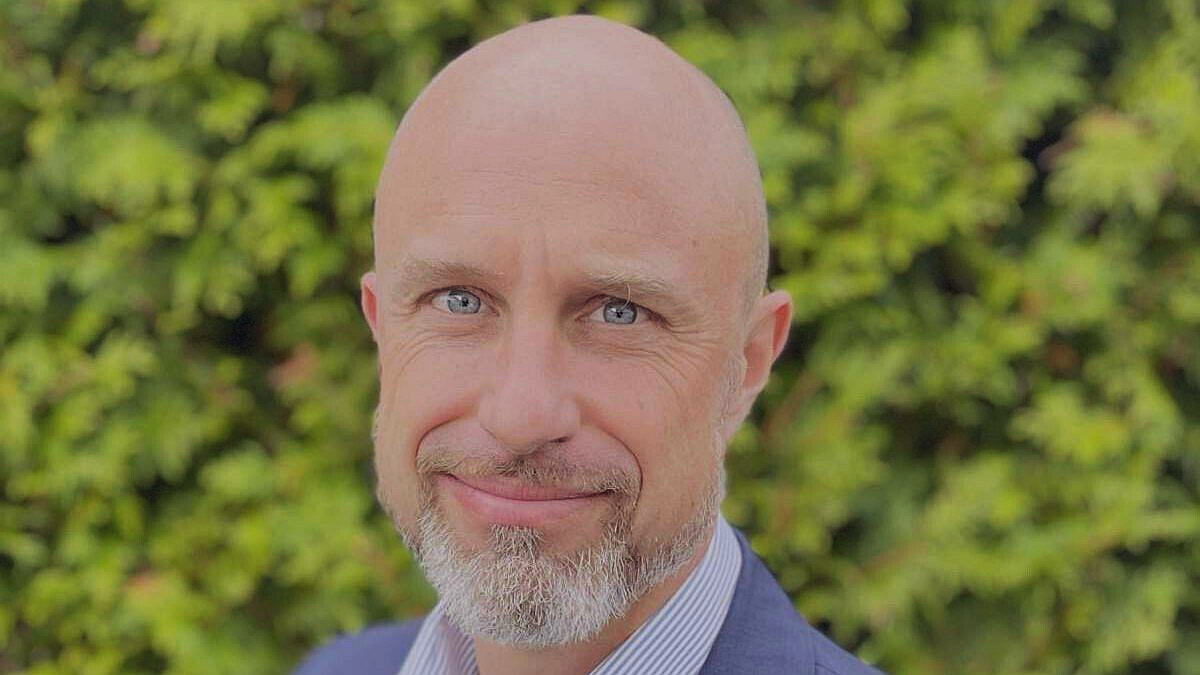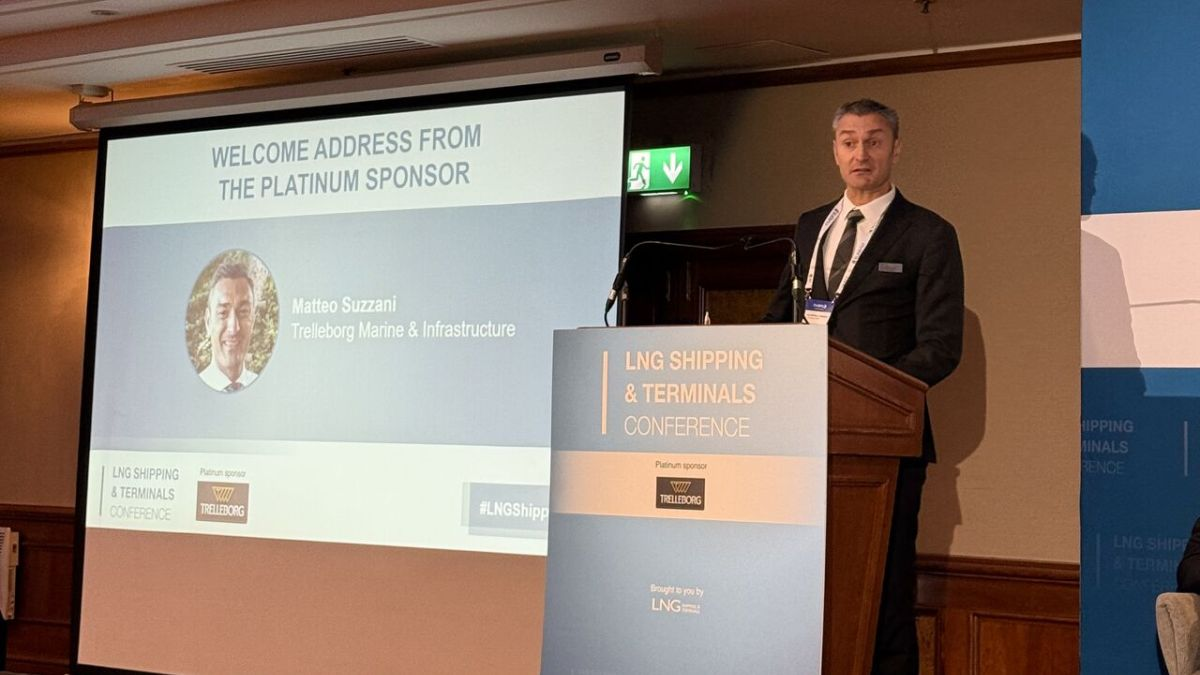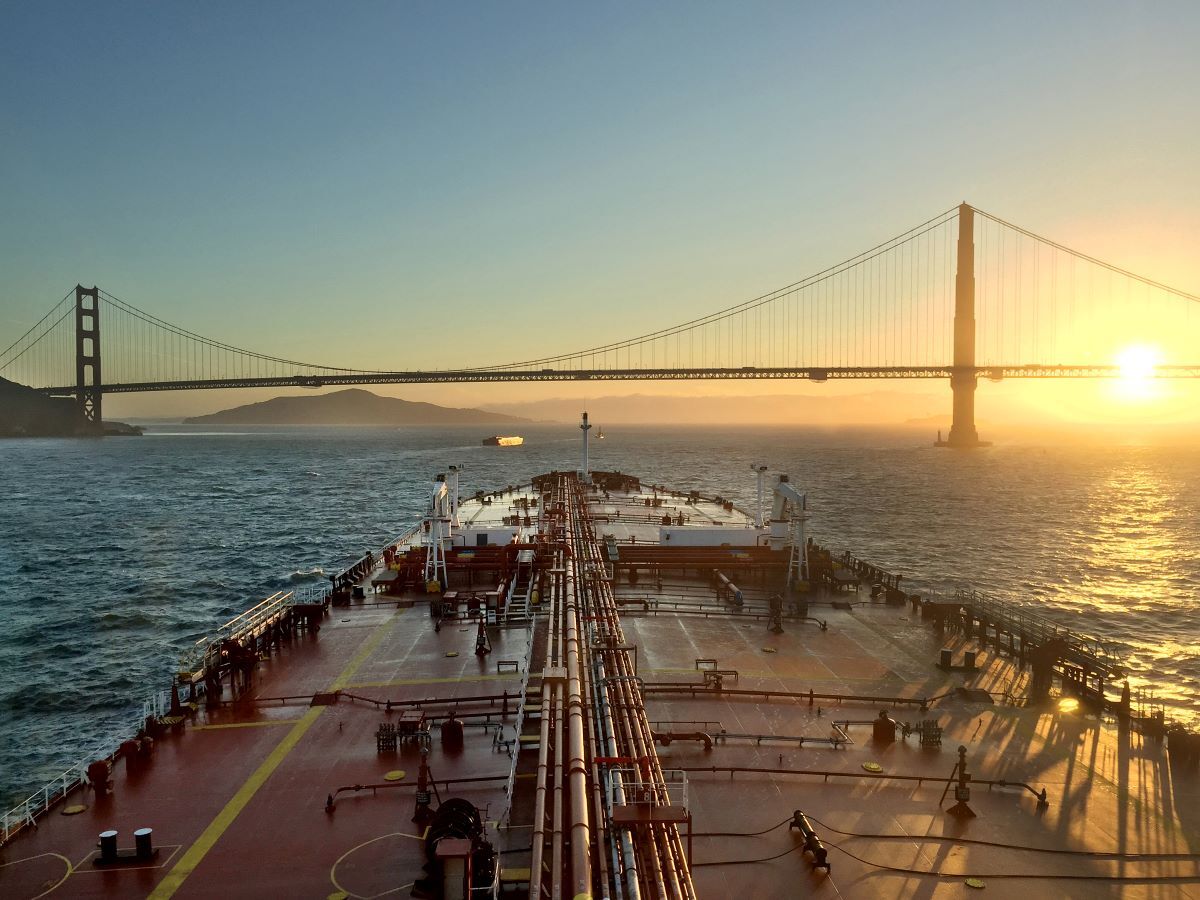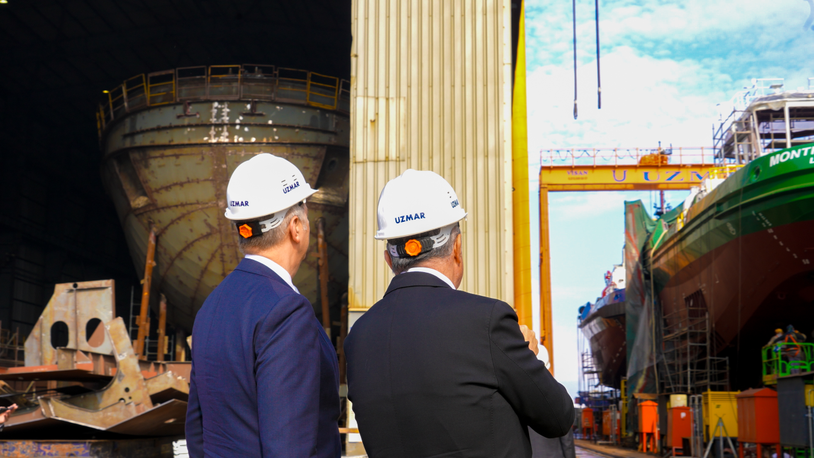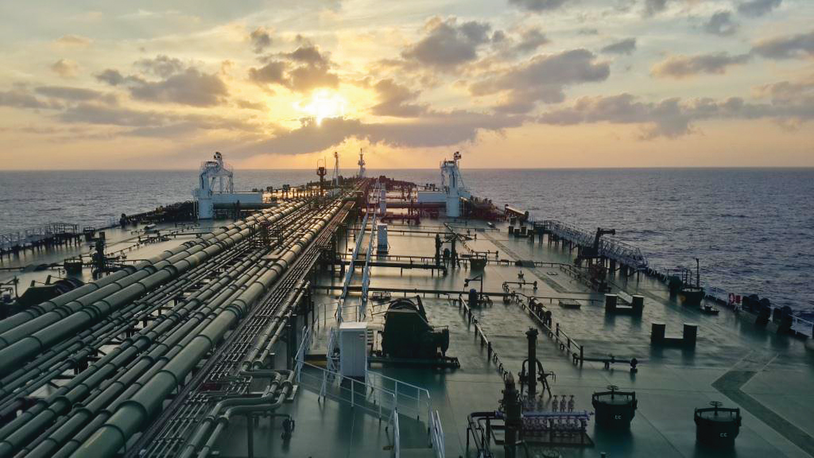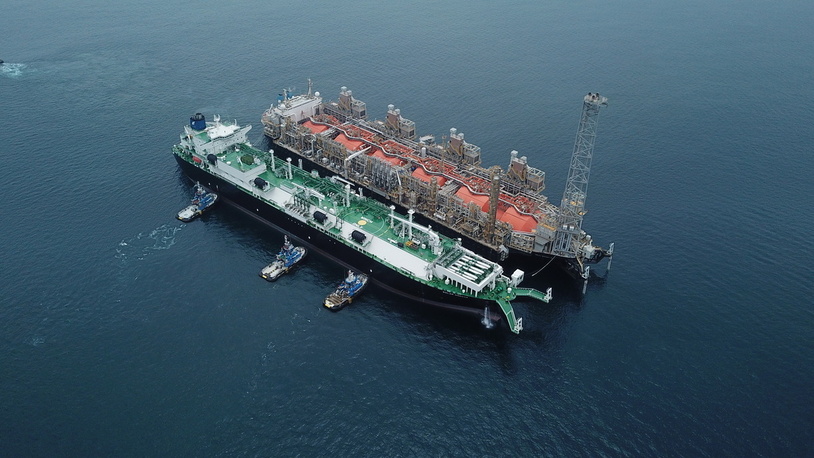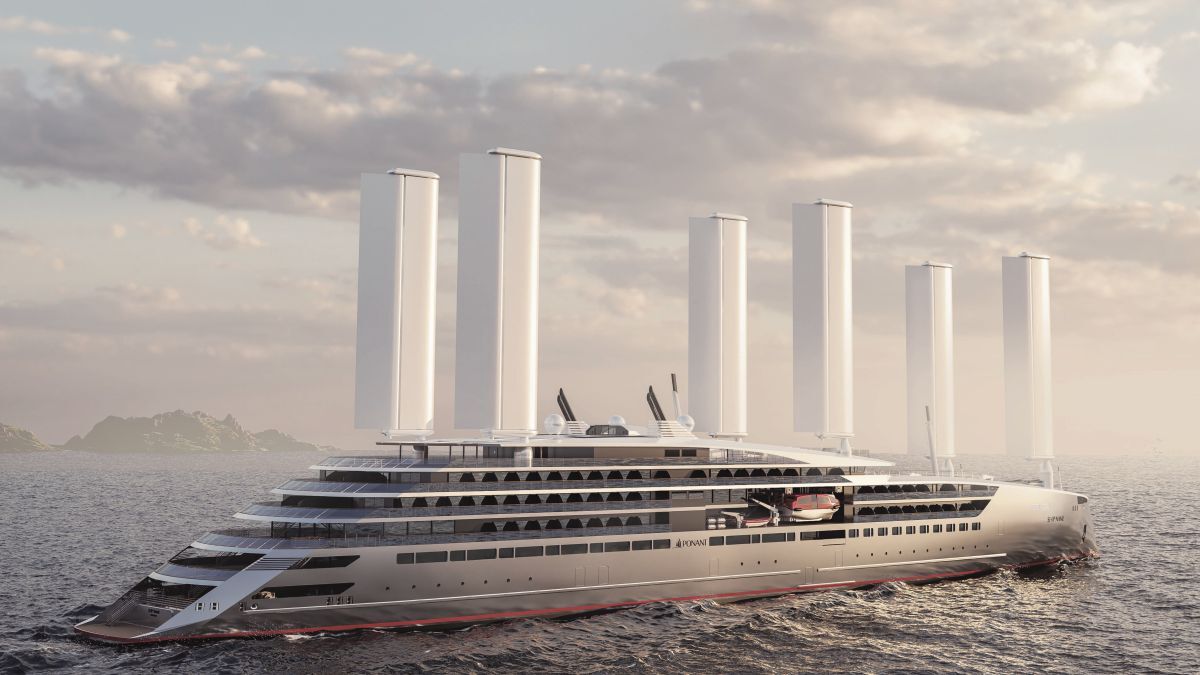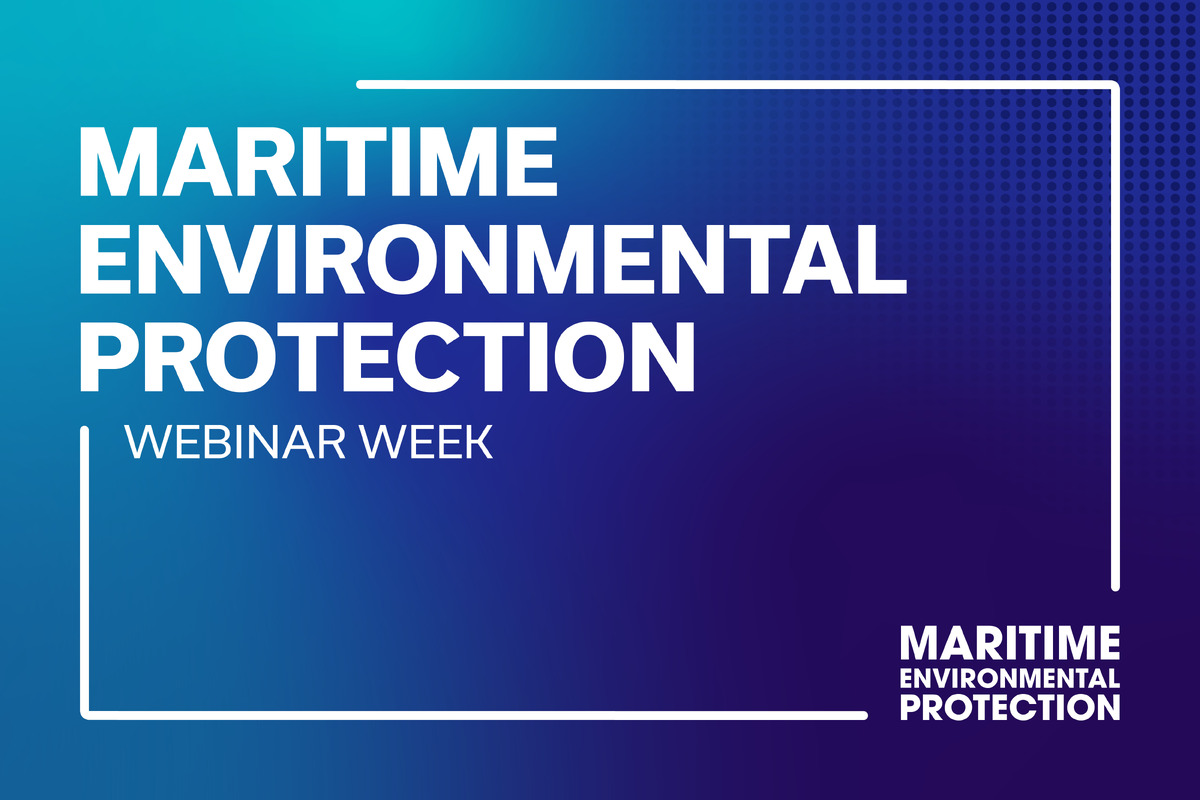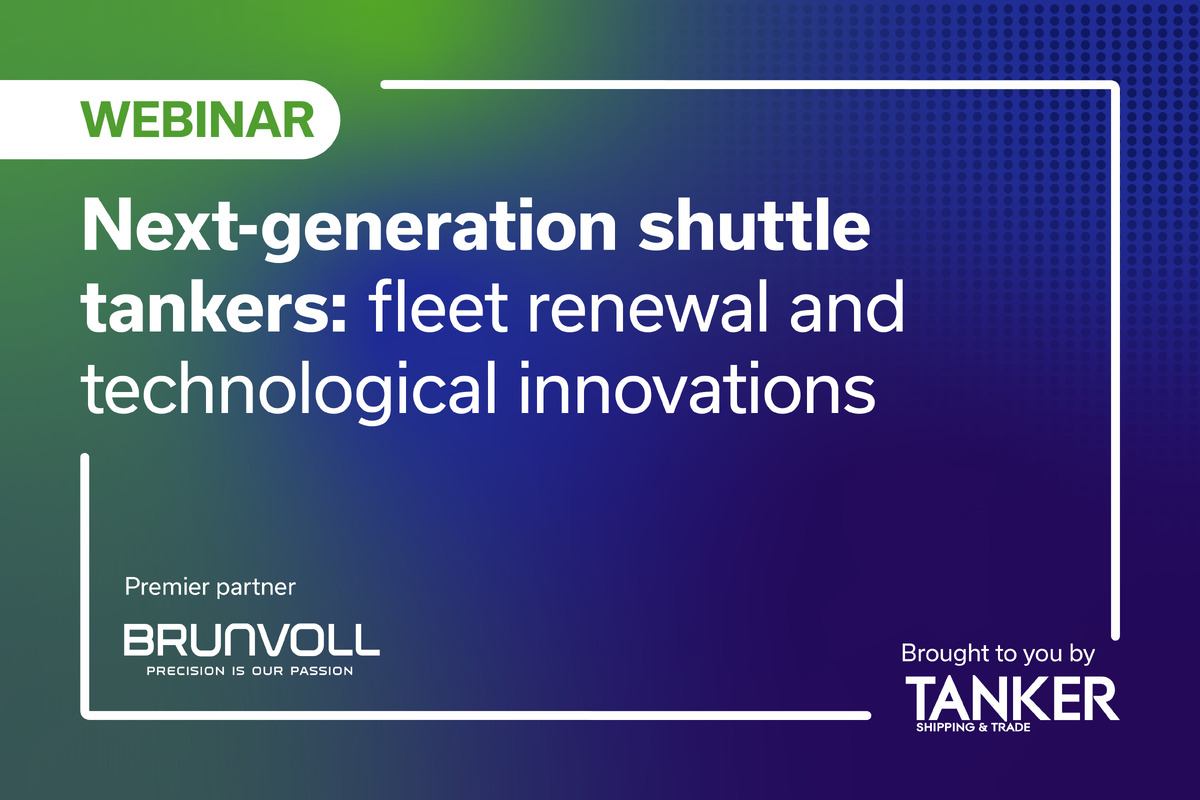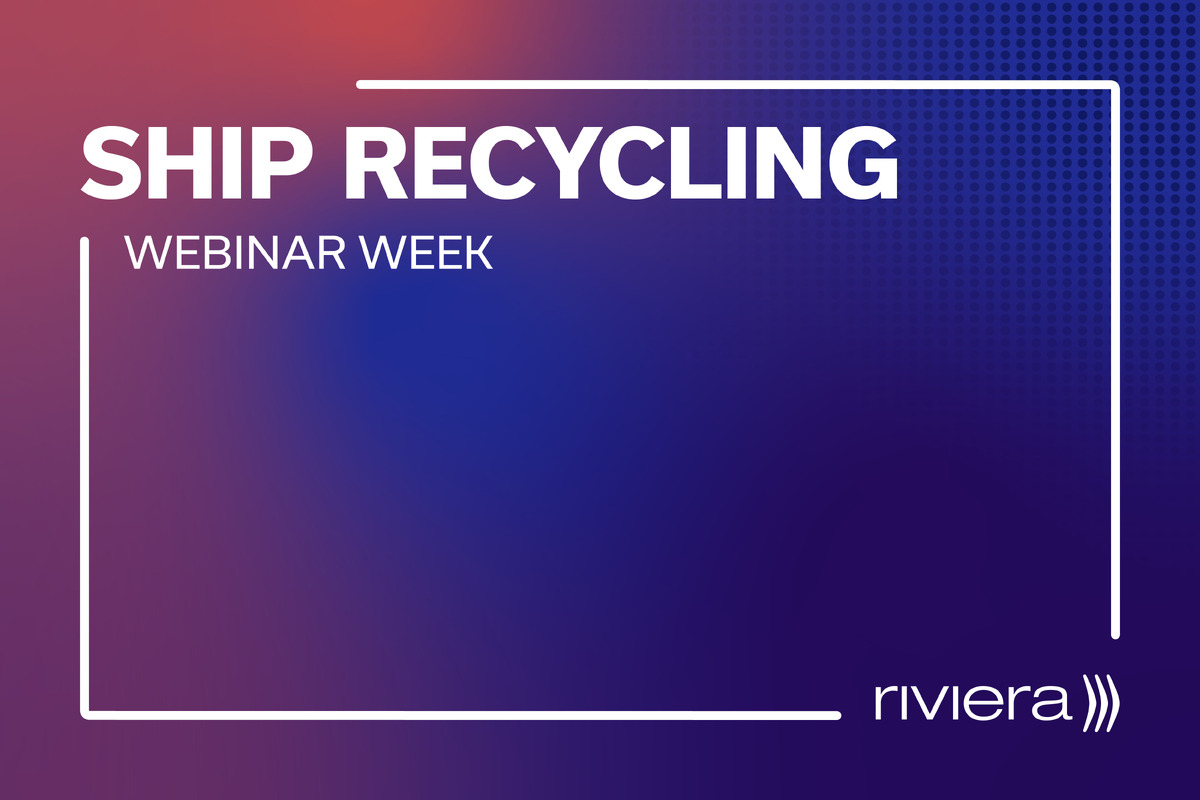Business Sectors
Events
Marine Coatings Webinar Week
Contents
Register to read more articles.
Cross-contamination risk shapes liquid CO2 loading strategy
A practical vapour-management loop is proposed to keep tank pressures stable during LCO2 loading while avoiding back-mixing dissimilar CO2 streams
Keeping pressure within operating bounds during liquefied CO2 (LCO2) transfer is a non-negotiable requirement. The established method is to connect a vapour return between ship and shore, but that link can move unwanted trace species from one CO2 inventory to another. Where captured CO2 originates from different emitters, with different process histories, the incentive to avoid cross-contamination is strong.
The issue was raised at Rivera’s CO2 Shipping, Terminals & CCS Conference, which took place on 8 September 2025 in Milan. TGE Marine proposal manager, Max Buschmann, presented the problem and the solution at the event, on behalf of an ill colleague. He said, “We have CO2 today from different sources, and depending on the sources, we have different chemical compositions,” with “SOx and NOx from combustion processes” cited as the problematic case. The conclusion drawn from TGE Marine’s conversations with terminals was blunt, “Terminals are not able, or they do not want to take vapour return.”
The operational implication is clear. If vapour return is discouraged, loading must still proceed without losing control of pressure on either side of the interface. One route considered was to condense the displaced tank vapour solely by injecting subcooled liquid into the cargo tank via existing spray lines.
“This is, theoretically, possible,” said Mr Buschmann. The hardware exists on board, and the mechanism is straightforward heat and mass balance reaction. TGE Marine has tested the idea against the actual supply conditions seen at loading manifolds. With a supply at −26.5°C and a target tank pressure of 16.5 barg, there is only a +2.7 Kelvin (K) temperature margin before the liquid reaches saturation. Loading 1.0 m3 cargo at these conditions will only condensate roughly 0.5 m3 of vapour. All calculations are speculative until they are confirmed within the process for each individual event initially. Under those assumptions, “The temperature increase of sprayed liquid is not sufficient to condense the displaced vapour,” and if “vapour cannot be fully condensed − pressure increases.” The analysis shows that loading without vapour return at these conditions would require a colder supply: below −31°C at 16.5 barg, and below −29°C at 18.0 barg.
Mr Buschmann added, “We noticed… when we get the CO2… at -26.5°C, then we have only a temperature margin of 2.7 K,” the speaker said. After calculating heat and mass balance, the verdict was cautious: the process is “very difficult to carry out, at least not at -26.5°C,” and it would demand “really sub-cooled CO2,” which “we cannot expect… always.” The method is therefore “very uncertain.”
A different approach is then proposed that retains the pressure-control benefits of vapour return while breaking the cross-contamination pathway. In this approach, the main loading stream flows from terminal to ship as normal. A small bypass of that incoming liquid, “maybe 5%” is routed through a heat exchanger and vaporised. The warm-side duty for that exchanger is provided by the ship’s own tank vapour, which is condensed and returned to the cargo tank. A compressor lifts the shipside vapour to the pressure needed to keep the loop running. The vapour that goes back towards the terminal originates from the terminal’s own liquid, not from the ship’s original vapour space.
Mr Buschmann summarised the outcome in plain terms, “We have solved two problems. The first problem is to keep the pressure constant in both tanks, or at least… in a certain range. And the second problem is that we can load the vessel without giving the storage any contaminated vapour back.” Because the vapour returned is generated from the terminal’s own liquid on the cold side of the exchanger, he argued, “There is no reason anymore for the storage… to avoid vapour return.”
From an implementation standpoint, the proposal seeks to reuse installed shipboard assets wherever possible. “The best thing is we can actually reuse some of the equipment we have on our medium-pressure CO2 carriers,” said Mr Buschmann, pointing to the existing vapour-return compressors − “typically two of them” − adding “we need to supply an additional heat exchanger,” after which “we can carry out this process on board our ship.” He also noted the loop “works for different pressure levels… also for low pressure.”
The motivation for segregation is only now being discussed as CO2 shipping and trade becomes one of the solutions to shipping decarbonisation. Different CO2 emitters “have different chemical compositions… so there is quite a big uncertainty how to deal with this.” In the specific case where CO2 stems from combustion, “SOx and NOx” raise concerns that other sources may not share, noted Mr Buschmann.
“Emitter A does not want to take the responsibility for the specification of Emitter B… via vapour return, during loading,” noted Mr Buschmann. The proposed loop answers that objection by keeping the terminal’s product within its own system boundary.
Looking forward, Mr Buschmann linked the method to a likely operating model for early aggregation. He said there is “still no… general agreement on how the composition should be,” despite the topic being under discussion “for a few years.” In his view, an approach that avoids cross-contamination during loading “will be needed during the next year in order to have one vessel which can collect CO2 from different emitters and then bring it to the storage site.”
Sign up for Riviera’s series of technical and operational webinars and conferences:
- Register to attend by visiting our events page.
- Watch recordings from all of our webinars in the webinar library.
Related to this Story
Events
Marine Coatings Webinar Week
Maritime Environmental Protection Webinar Week
Ship Recycling Webinar Week
© 2024 Riviera Maritime Media Ltd.

